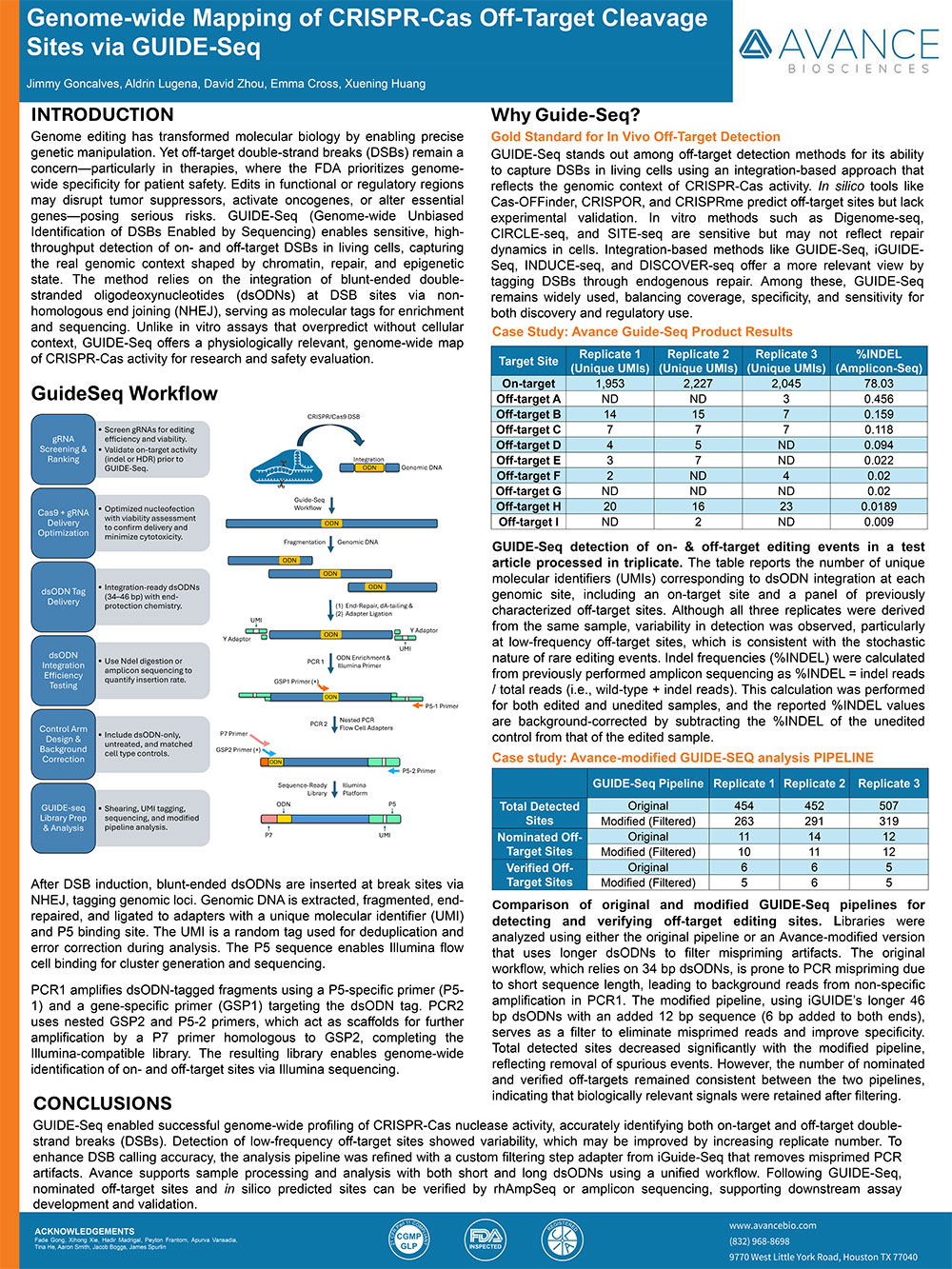Genome-wide Mapping of CRISPR-Cas Off-Target Cleavage Sites via GUIDE-Seq
Jimmy Goncalves, Aldrin Lugena, David Zhou, Emma Cross, Xuening Huang
Genome editing has transformed molecular biology by enabling precise genetic manipulation. Yet off-target double-strand breaks (DSBs) remain a concern—particularly in therapies, where the FDA prioritizes genomewide specificity for patient safety. Edits in functional or regulatory regions may disrupt tumor suppressors, activate oncogenes, or alter essential genes—posing serious risks. GUIDE-Seq (Genome-wide Unbiased Identification of DSBs Enabled by Sequencing) enables sensitive, highthroughput detection of on- and off-target DSBs in living cells, capturing the real genomic context shaped by chromatin, repair, and epigenetic state. The method relies on the integration of blunt-ended doublestranded oligodeoxynucleotides (dsODNs) at DSB sites via nonhomologous end joining (NHEJ), serving as molecular tags for enrichment and sequencing. Unlike in vitro assays that overpredict without cellular context, GUIDE-Seq offers a physiologically relevant, genome-wide map of CRISPR-Cas activity for research and safety evaluation.
Social Sharing
